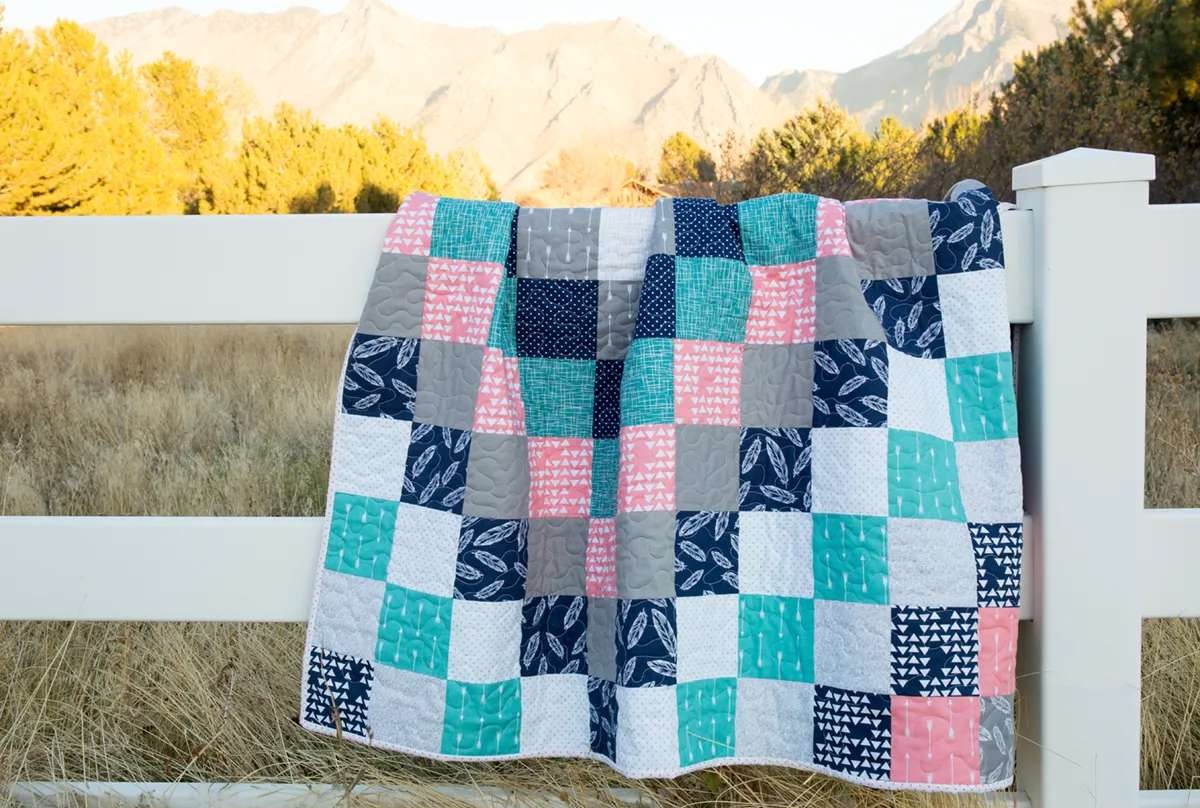

Articles
What Is The Most Popular Quilt Pattern
Modified: January 19, 2024
Discover the most popular quilt patterns in our collection of articles. From traditional to modern, find inspiration for your next quilting project.
(Many of the links in this article redirect to a specific reviewed product. Your purchase of these products through affiliate links helps to generate commission for Storables.com, at no extra cost. Learn more)
Introduction
Quilting is an ancient art form that has been practiced for centuries, serving both functional and decorative purposes. As the craft has evolved over time, different quilt patterns have emerged, each with its own unique appeal and popularity.
In this article, we will explore the fascinating world of quilt patterns and delve into the most popular ones. From traditional designs to modern variations, quilt patterns reflect both cultural traditions and contemporary aesthetics. By understanding the history and factors influencing their popularity, we can gain a deeper appreciation for this enduring craft.
Whether you are a seasoned quilter or simply curious about the art form, join us on this journey as we unravel the mysteries behind the most beloved quilt patterns in today’s world.
Key Takeaways:
- Quilt patterns bridge the past and present, offering a rich tapestry of tradition and innovation. From the timeless allure of traditional designs to the vibrant energy of modern patterns, quilting invites creativity and cultural celebration.
- The Half Square Triangle pattern emerges as a versatile and beloved choice, uniting quilters of all skill levels. Its timeless appeal, adaptability, and online community support make it a standout in today’s quilting landscape.
Read more: What Is The Most Popular Wildflower
History of Quilting
Quilting has a rich and storied history that dates back thousands of years. Its origins can be traced to ancient civilizations, where people used stitched-together layers of fabric for warmth and comfort. However, it wasn’t until the Middle Ages that quilting began to take on a more decorative role.
During the 11th to 13th centuries, quilting techniques spread throughout Europe, and quilts became highly prized possessions. They were often intricately crafted with elaborate designs and symbols, showcasing the skills and creativity of the quilters.
In the 18th and 19th centuries, quilting reached new heights of popularity in North America. Settlers in the colonies embraced quilting as a practical way to insulate their homes and beds. Quilts were pieced together using scraps of fabric, and the practice of quilting bees emerged as a social event where women would come together to quilt and socialize.
Quilt patterns during this time often showcased traditional motifs, such as log cabin, nine-patch, and flying geese, which represented the settlers’ values and aspirations. As the Industrial Revolution took hold, fabric production became more accessible, and new patterns and techniques emerged.
The 20th century brought quiltmaking to new heights of creativity and innovation. Artistic movements like the Amish quilts, where simplicity and geometric patterns prevailed, added to the diverse range of quilt designs.
Today, quilting continues to thrive as a beloved craft, with an array of quilt patterns that pay homage to the rich history and traditions of this timeless art form.
Brief Overview of Quilt Patterns
Quilt patterns serve as the blueprint for creating a quilt. They dictate the arrangement and design of the fabric pieces, creating a visually appealing and cohesive end result. Quilt patterns can be categorized into two main types: traditional and modern.
Traditional quilt patterns are rooted in history and have been passed down through generations. They often feature classic motifs and repetitive block designs. Traditional patterns evoke a sense of nostalgia and connect us to the rich heritage of quilting.
On the other hand, modern quilt patterns offer a fresh and contemporary take on quilting. They embrace bold colors, asymmetrical designs, and innovative techniques. Modern patterns push the boundaries of traditional quilting and appeal to those seeking a more modern aesthetic.
Some common types of quilt patterns include:
- Strip Quilts: These patterns involve sewing together different-sized fabric strips to create a dynamic and visually striking design.
- Patchwork Quilts: Patchwork patterns consist of sewing together various fabric pieces, typically squares or triangles, to form a larger quilt top.
- Appliqué Quilts: Appliqué involves stitching fabric shapes or designs onto a base fabric to create intricate and detailed patterns.
- Log Cabin Quilts: One of the most iconic traditional patterns, log cabin quilts feature strips of fabric pieced together to form a central square surrounded by concentric layers.
- Star Quilts: Star patterns are popular in both traditional and modern quilting. They feature intricate star-shaped designs, often created through a combination of piecing and appliqué.
These are just a few examples of the countless quilt patterns available. Each pattern offers its own unique charm and design elements, allowing quilters to express their creativity and individuality.
Whether you prefer the timeless elegance of traditional patterns or the vibrant energy of modern designs, there is a quilt pattern to suit every quilter’s taste and style.
Traditional Quilt Patterns
Traditional quilt patterns are steeped in history and have been cherished and passed down for generations. These patterns often evoke a sense of nostalgia and connect us to the rich heritage of quilting. Let’s explore some of the most beloved traditional quilt patterns.
1. Log Cabin: The Log Cabin quilt pattern is a quintessential symbol of American quilting. It features strips of fabric sewn around a center square to create a cabin-like effect. This pattern symbolizes the importance of home and family.
2. Nine-Patch: The Nine-Patch pattern is a simple yet charming design. It comprises nine equal-sized squares arranged in a checkerboard pattern. This pattern allows for infinite color and fabric combinations, making it a versatile and popular choice.
3. Double Wedding Ring: The Double Wedding Ring quilt pattern is a symbol of love and unity. It features interlocking rings that represent the eternal bond of marriage. This pattern requires precision and skill, as the curved shapes can be challenging to piece together.
4. Flying Geese: The Flying Geese pattern is inspired by the migratory patterns of geese. It consists of triangles arranged in a V-shape, mimicking the formation of geese in flight. This pattern is versatile and can be used in various quilt designs.
5. Ohio Star: The Ohio Star pattern is a classic design that showcases a large star in the center surrounded by smaller stars or squares. This pattern is popular for its simplicity and visually striking impact.
6. Cathedral Window: The Cathedral Window pattern is known for its intricate and stunning appearance. It involves folding fabric to create three-dimensional window-like shapes that are interconnected. This pattern is often used to create decorative quilted pillows or wall hangings.
These are just a few examples of the traditional quilt patterns that have stood the test of time. Each pattern has its own unique charm and history, making them beloved choices for quilters across generations.
Quilting enthusiasts continue to embrace traditional patterns, infusing them with their own personal touch and creativity, ensuring that these patterns remain an integral part of the quilting tradition for years to come.
Modern Quilt Patterns
Modern quilt patterns have gained popularity in recent years, bringing a fresh and contemporary twist to the world of quilting. These patterns embrace bold colors, innovative designs, and a departure from traditional block layouts. Let’s explore some of the most popular modern quilt patterns.
1. Improvisational Quilting: Improvisational quilting is all about embracing creativity and spontaneity. This style encourages quilters to eschew strict patterns and rules, allowing for free-form piecing and asymmetrical designs. It’s a great way to let your imagination run wild and create one-of-a-kind quilts.
2. Geometric Blocks: Geometric quilt blocks are a hallmark of modern quilting. These patterns feature clean lines, bold shapes, and an emphasis on geometric precision. From triangles and hexagons to circles and parallelograms, modern quilt patterns use these shapes to create visually striking designs.
3. Minimalist Quilts: Minimalism has made its mark on the quilting world, with designs that focus on simplicity and clean lines. These patterns often use a limited color palette and negative space to create a sense of calm and balance. Minimalist quilts can be powerful in their simplicity and can make a bold statement.
4. Modern Log Cabin: The modern twist on the Log Cabin pattern takes the traditional design and infuses it with contemporary flair. Modern Log Cabin quilts often feature asymmetrical arrangements, bold color choices, and oversized blocks. This pattern offers a fresh take on a beloved classic.
5. Wonky Blocks: Wonky blocks embrace imperfection and whimsy. These patterns feature off-kilter angles, uneven edges, and a playful sense of randomness. Wonky blocks encourage quilters to let go of perfection and embrace the joy of the unexpected.
6. Mosaic Quilts: Mosaic quilts create stunning visual effects by arranging small fabric pieces into intricate patterns. These designs are reminiscent of mosaics found in art and architecture. Mosaic quilt patterns offer endless possibilities and allow quilters to experiment with color and texture.
Modern quilt patterns offer a contemporary take on the traditional craft of quilting. They provide a platform for self-expression, experimentation, and pushing the boundaries of design. With their vibrant colors, innovative techniques, and creative approaches, modern quilt patterns continue to inspire quilters of all skill levels.
Whether you’re drawn to the clean lines of geometric patterns or the spontaneity of improvisational quilting, modern quilt patterns offer endless opportunities to showcase your individuality and create quilts that reflect your unique style.
The most popular quilt pattern is the “Log Cabin” pattern, known for its versatility and timeless appeal. It’s a great choice for quilters of all skill levels.
Popular Quilt Patterns in Different Cultures
Quilting is a universal craft, practiced by cultures around the world. Each culture brings its own unique style and influences to the art of quilting, resulting in a diverse range of popular quilt patterns. Let’s explore some of the well-known quilt patterns from different cultures.
1. Hawaiian Quilts: Hawaiian quilts are known for their intricate appliqué designs. These patterns often feature nature-inspired motifs such as flowers, leaves, and ocean waves. Traditional Hawaiian quilts are typically created using a single color on a contrasting background, with each design element hand-cut and stitched onto the fabric.
2. Amish Quilts: Amish quilts are characterized by their simple and geometric designs. Typically made with solid-colored fabrics and featuring patterns like Lone Star, Trip Around the World, or Log Cabin, Amish quilt patterns emphasize precise piecing and showcase the beauty of simplicity.
3. Japanese Sashiko Quilts: Sashiko is a traditional Japanese embroidery technique that has been incorporated into quilting. Sashiko quilts feature intricate running stitches on indigo-dyed fabric. The patterns often depict geometric shapes, nature-inspired designs, or traditional Japanese motifs like waves or cherry blossoms.
4. Indian Kantha Quilts: Kantha quilts are a type of quilted textile popular in India. Made from layers of old saris or reclaimed fabrics, these quilts are stitched together with running stitches in a straight or irregular pattern. Kantha quilting often depicts symbolic motifs such as animals, flowers, or mythological figures.
5. English Paper Piecing: This technique originated in England and involves using paper templates to guide the piecing process. Hexagon-shaped quilt patterns known as “Grandmother’s Flower Garden” are one of the most recognizable English Paper Piecing designs. This intricate pattern features small fabric hexagons sewn together to create a vibrant floral motif.
6. African American Quilt Patterns: African American quilt patterns are deeply rooted in the cultural heritage and history of African Americans. These quilts often incorporate bold, vibrant colors and symbolic elements, such as the use of African fabric prints, Kente cloth, or African mask motifs, to celebrate identity and pay homage to ancestral traditions.
These are just a few examples of the popular quilt patterns found in different cultures. Each culture’s unique heritage and artistic traditions have shaped the quilt patterns and techniques that are cherished and passed down through generations.
By exploring and embracing quilt patterns from diverse cultures, we can celebrate the richness and diversity of the quilting community and appreciate the stories and traditions woven into each stitch.
Factors Influencing Quilt Pattern Popularity
The popularity of a quilt pattern can be influenced by various factors, ranging from current trends and cultural influences to personal preferences and artistic expression. Here are some key factors that contribute to the popularity of quilt patterns.
1. Cultural Significance: Quilt patterns often reflect the cultural heritage of a particular community or region. People are drawn to patterns that resonate with their cultural background or that allow them to connect with their roots. Quilt patterns like Hawaiian appliqué or Amish quilts have enduring popularity due to their cultural significance and historical value.
2. Trend and Fashion: Quilt patterns, like other art forms, can be influenced by trends and fashion. Certain patterns may gain popularity due to their alignment with current design trends or color schemes. Quilters often seek patterns that feel contemporary and fresh, and this can impact the popularity of specific quilt designs.
3. Versatility and Adaptability: Quilt patterns that offer versatility and adaptability are often favored by quilters. Patterns that can easily be modified, scaled up or down, or combined with other patterns allow for limitless creativity. Quilters appreciate the flexibility of patterns that allow them to personalize their quilts and make them unique.
4. Skill Level and Accessibility: The ease of a quilt pattern can greatly influence its popularity. Beginners may prefer simple, straightforward patterns that require basic stitching techniques, while experienced quilters may be drawn to more complex and challenging designs. Quilt patterns with clear instructions and tutorials are often more popular as they are accessible to a wider range of quilters.
5. Emotional Connection and Sentimentality: Some quilt patterns hold sentimental value and evoke emotional connections. Quilters may be drawn to patterns that remind them of cherished memories, family traditions, or special occasions. Quilting provides a way to express emotions and tell stories through fabric, and patterns that resonate on an emotional level often capture the hearts of quilters.
6. Innovation and Creativity: Quilters are constantly seeking new and innovative patterns that push the boundaries of traditional quilting. Patterns that offer creative techniques, unique design elements, or fresh interpretations of classic designs can quickly gain popularity. Quilters appreciate patterns that challenge their skills and enable them to explore their artistic expression.
It is essential to remember that quilt pattern popularity can vary over time, as trends evolve, and personal preferences shift. What remains constant is the passion and creativity of quilters, who continuously explore new patterns and techniques, bringing fresh life to the vibrant world of quilting.
The Most Popular Quilt Pattern Today
In the ever-evolving world of quilting, it can be challenging to pinpoint a single quilt pattern as the most popular. However, one pattern that has gained significant popularity in recent years is the “Half Square Triangle” (HST) quilt pattern.
The Half Square Triangle pattern is beloved for its versatility, simplicity, and timeless appeal. It involves cutting squares into triangles and then sewing them together to create a variety of geometric designs. This pattern offers endless possibilities for creating unique and visually stunning quilts.
One of the reasons for the Half Square Triangle pattern’s popularity is its accessibility to quilters of all skill levels. Beginners can easily grasp the concept and start creating beautiful quilts using this pattern. Experienced quilters appreciate its versatility and ability to be combined with other patterns or manipulated to achieve different looks.
Another factor contributing to the Half Square Triangle’s popularity is its adaptability to different design aesthetics. Traditional quilt enthusiasts can use this pattern to create classic and timeless designs, while modern quilters can explore bold color combinations and innovative layouts. Its clean lines and geometric shapes make it a popular choice for both traditional and contemporary styles.
The Half Square Triangle pattern also thrives in the online quilting community, where quilters share their creations and exchanging inspiration. Social media platforms, blogs, and quilting forums are filled with stunning examples of quilts made with this pattern, further fueling its popularity and encouraging others to give it a try.
Furthermore, the Half Square Triangle pattern offers endless design possibilities, allowing quilters to experiment with various layouts, color gradations, and block placements. Whether arranged in a classic chevron, pinwheel, or star formation, or used to create more intricate designs like medallions or bargello effects, the Half Square Triangle pattern never fails to captivate with its versatility and visual impact.
Lastly, the Half Square Triangle pattern’s popularity is driven by the desire for quilts that combine beauty, simplicity, and functionality. Quilters appreciate that the pattern lends itself well to different fabric choices, making it suitable for both scrappy quilts and more coordinated designs. The resulting quilts can be used as stunning wall hangings, cozy bed quilts, or cherished heirlooms.
While the popularity of quilt patterns may ebb and flow, the Half Square Triangle pattern continues to hold a special place in the hearts of quilters worldwide. Its timeless appeal, versatility, and ability to be tailored to individual styles ensure that it remains one of the most popular quilt patterns today.
Conclusion
Quilt patterns showcase the beauty and artistry of the quilting world, connecting us to rich traditions, cultural heritage, and personal creativity. From the traditional to the modern, each pattern brings its own unique charm and appeal.
As we’ve explored in this article, quilt patterns bear witness to the evolution of quilting throughout history. Traditional patterns, like the Log Cabin and Nine-Patch, hold a deep nostalgia and convey a sense of heritage. Modern patterns, on the other hand, embrace innovation and contemporary design elements, breathing new life into the craft.
Quilting patterns are embraced by various cultures, each contributing to a diverse tapestry of designs. From Hawaiian quilts to Japanese Sashiko quilts, these patterns carry the customs, symbols, and stories of their respective cultures, forming a connection between generations and continents.
Factors such as current trends, personal preferences, accessibility, and cultural significance all influence the popularity of quilt patterns. Designs that strike an emotional chord, offer versatility, or inspire creativity often resonate with quilters, propelling certain patterns into the spotlight.
While it is challenging to pinpoint a single quilt pattern as the most popular today, the Half Square Triangle pattern stands out for its versatility, simplicity, and adaptability. This pattern has captured the imagination of quilters worldwide, inspiring a myriad of creative possibilities and reflecting the ever-changing landscape of quilting.
Ultimately, quilt patterns are a reflection of our artistry, cultural heritage, and personal expression. They allow us to transform fabric into something beautiful, functional, and meaningful. Whether you prefer traditional patterns that honor the past or modern designs that push boundaries, the world of quilting invites you to explore, create, and celebrate the art of quiltmaking.
So, whether you choose to embrace the timeless elegance of traditional quilt patterns, the vibrant energy of modern designs, or delve into the rich cultural tapestry of worldwide quilt patterns, may your quilting journey be filled with creativity, joy, and a deep appreciation for the art form.
Frequently Asked Questions about What Is The Most Popular Quilt Pattern
Was this page helpful?
At Storables.com, we guarantee accurate and reliable information. Our content, validated by Expert Board Contributors, is crafted following stringent Editorial Policies. We're committed to providing you with well-researched, expert-backed insights for all your informational needs.




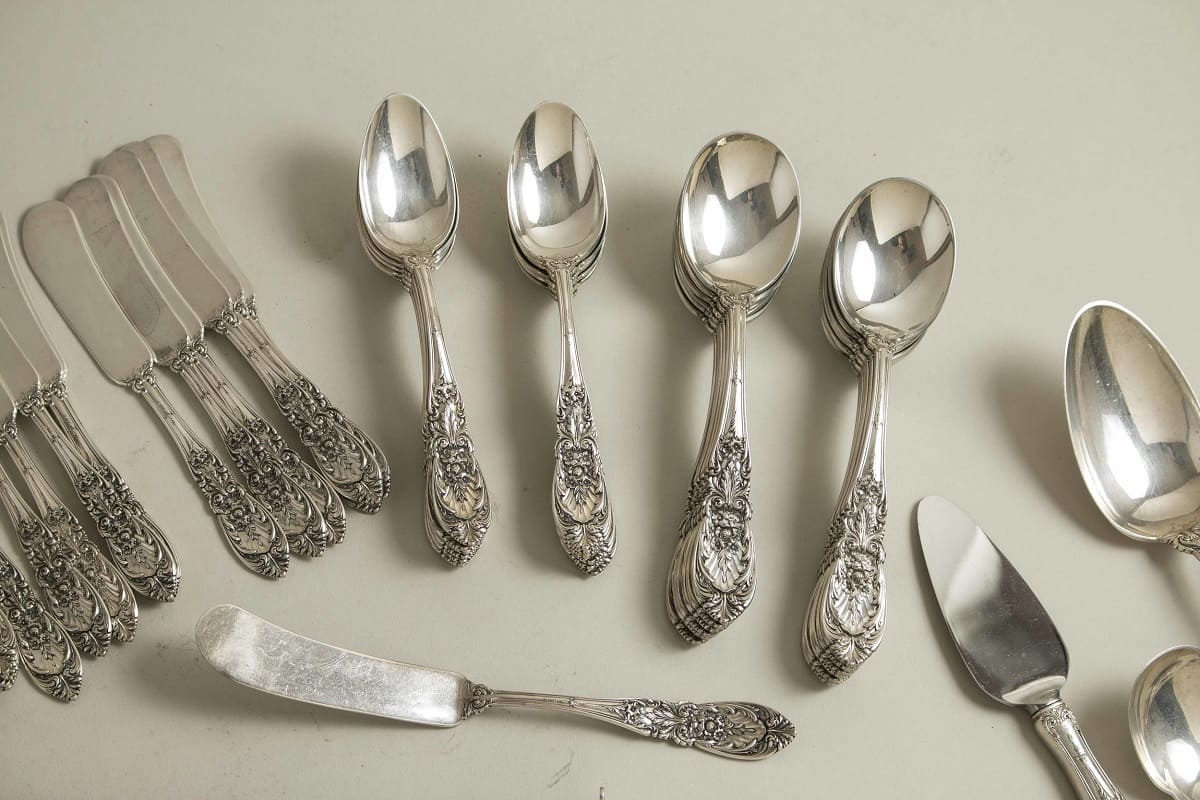
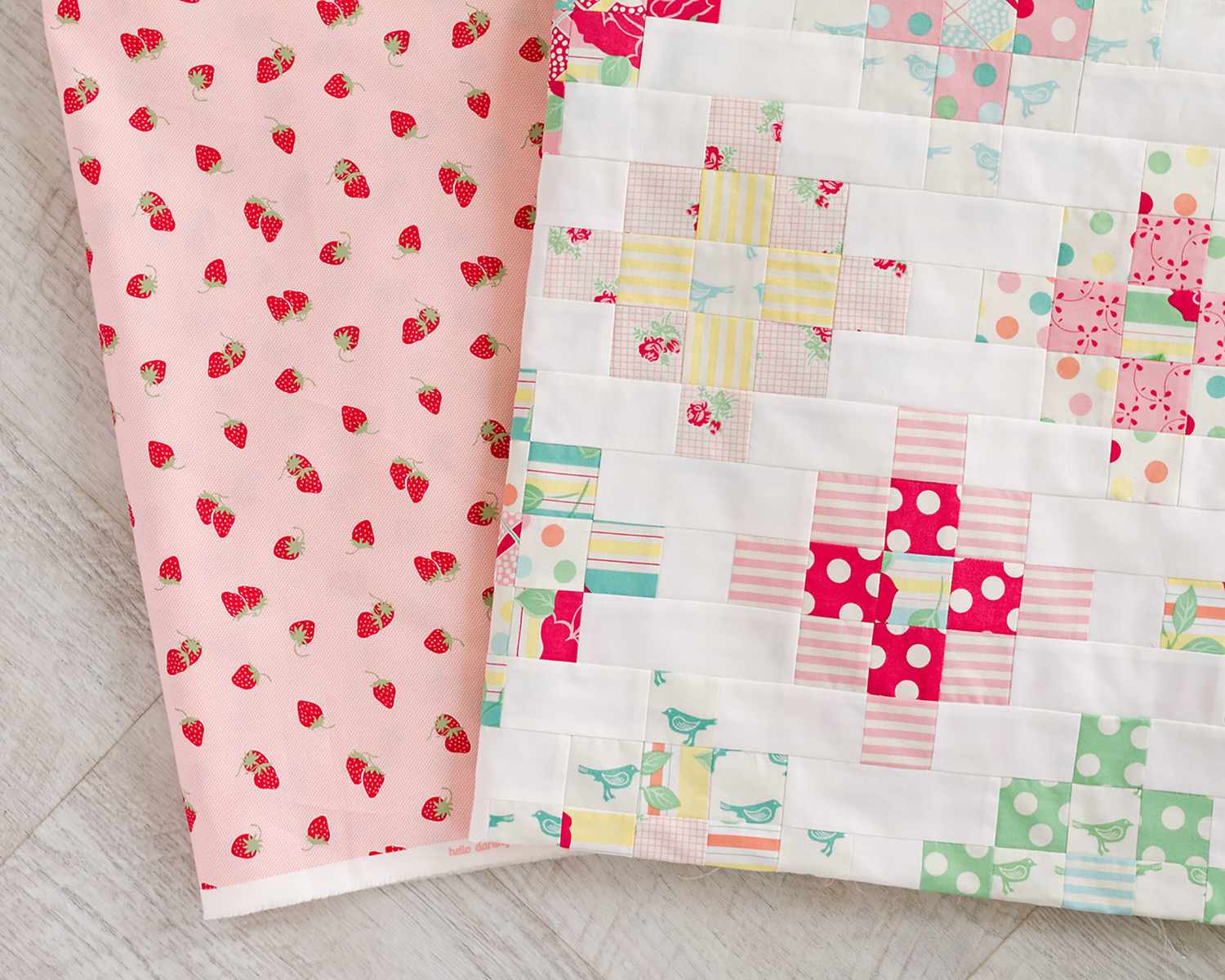

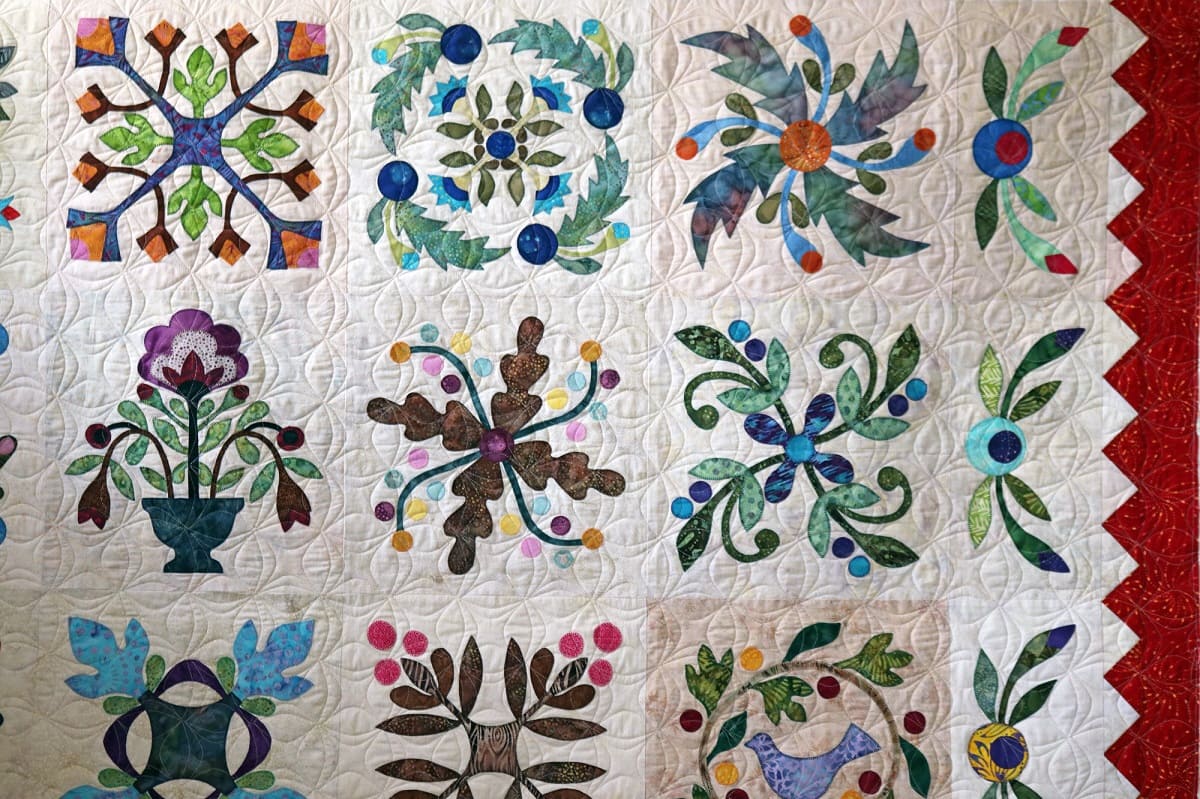
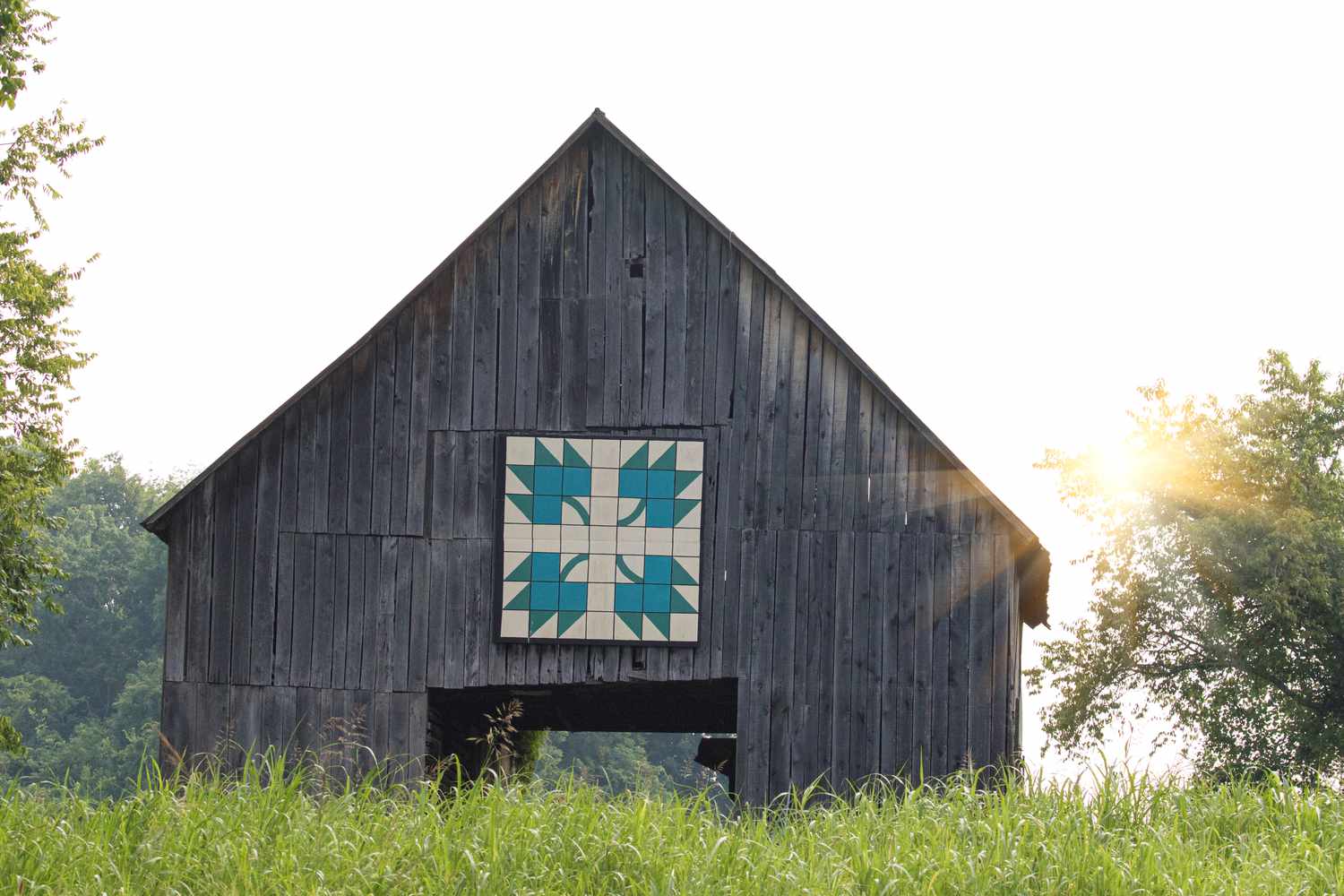
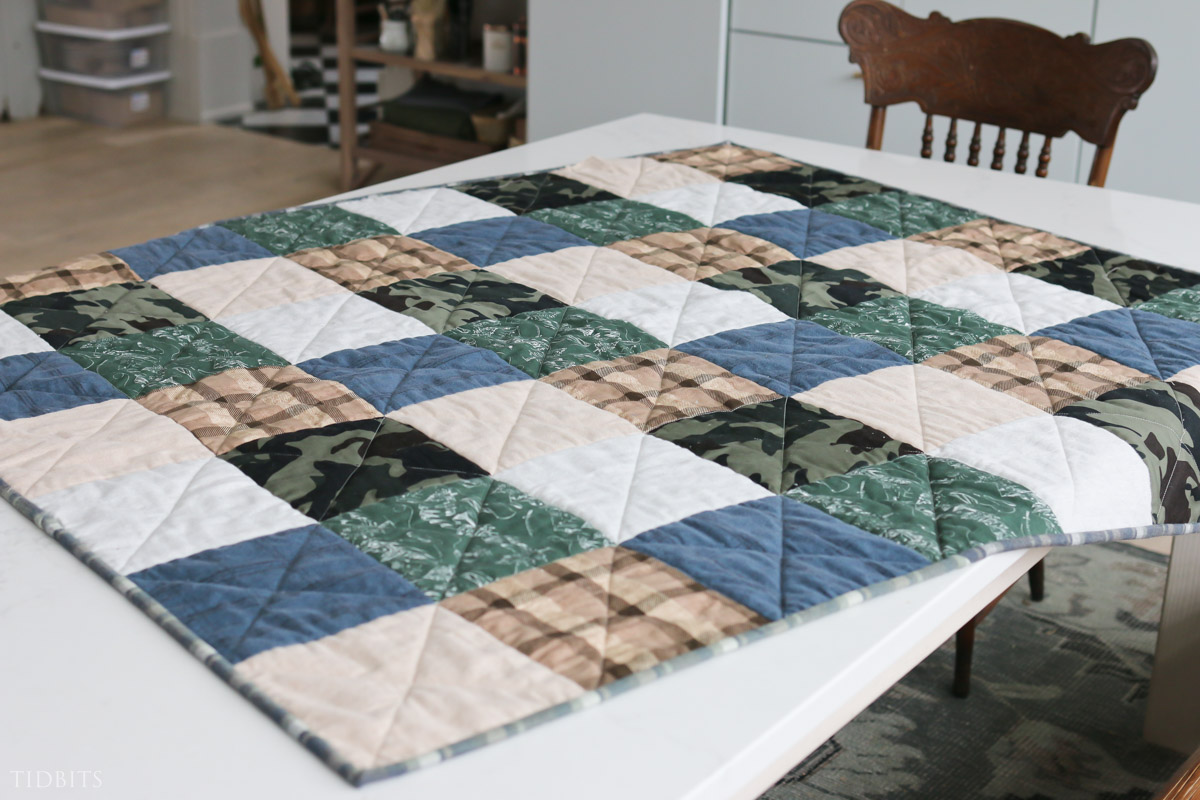
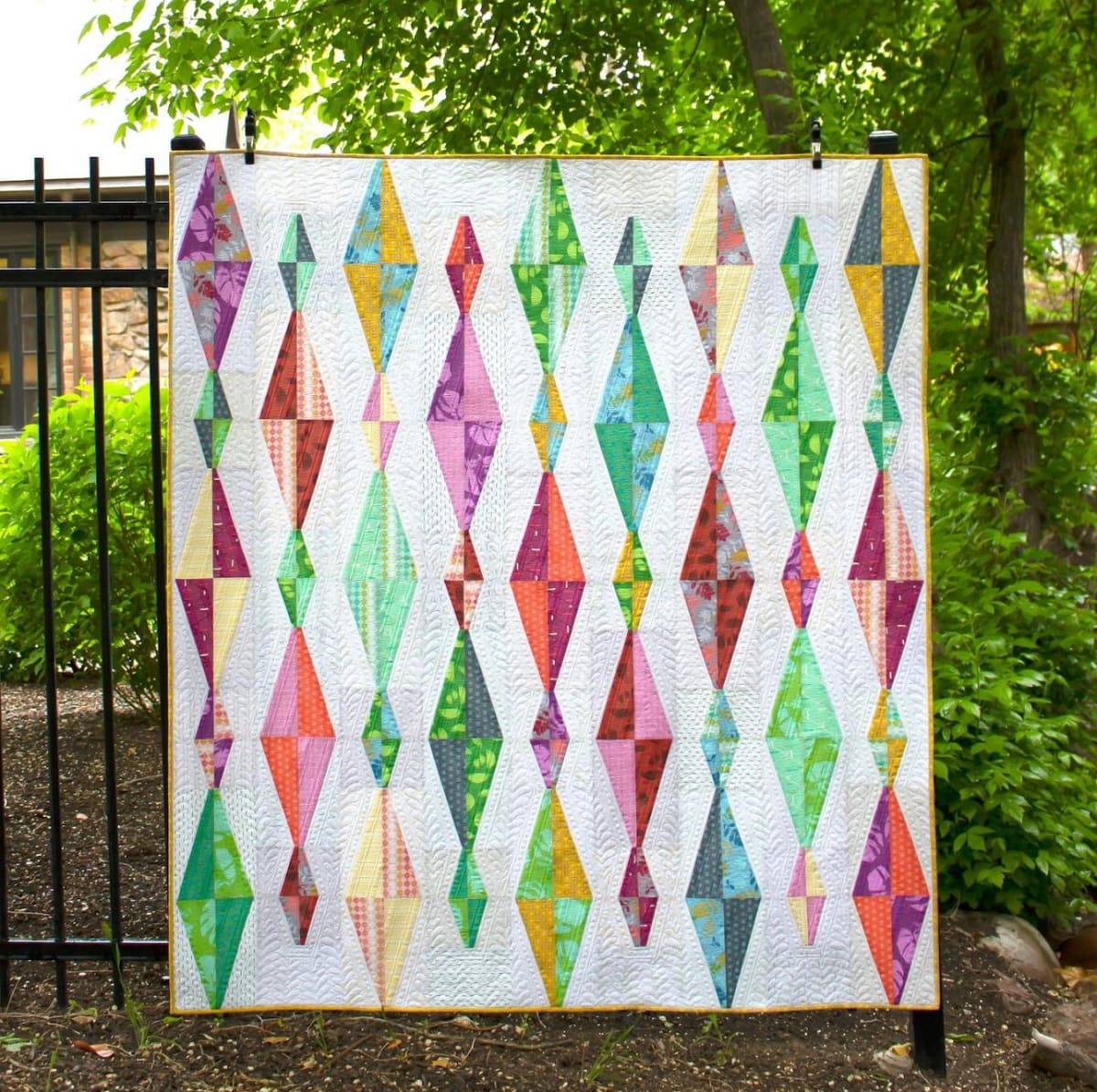




0 thoughts on “What Is The Most Popular Quilt Pattern”